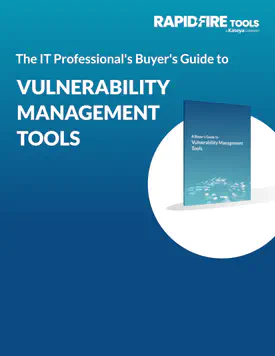Vulnerability management is an ongoing process. It is a defined and accepted framework that constitutes six phases. This allows you to identify and address vulnerabilities efficiently and in a continuous manner.
What are the steps in the vulnerability management lifecycle?
Vulnerabilities continually emerge, with new issues being identified daily. This means that the vulnerability management lifecycle is never-ending. Addressing each of these six steps is critical to your success in minimizing vulnerability risk.
- Discovery: Building an inventory of all assets across the network and host details, including operating systems and open services. You must also develop a network baseline and identify security vulnerabilities on a regular, automated schedule.
- Prioritization: Categorizing assets into groups or business units and assigning a business value to asset groups based on how critical they are to business operation.
- Assessment: Determining a baseline risk profile to eliminate risks based on asset criticality, vulnerability threat, and asset classification.
- Reporting: Measuring the level of business risk associated with assets according to security policies. You also need to develop and document a security plan, monitor suspicious activity, and define known vulnerabilities.
- Remediation: Prioritizing and fixing vulnerabilities in an order determined by business risk. It’s crucial to establish controls and demonstrate progress during this step.
- Verification: Conducting follow-up audits to verify threats have been eliminated.
VulScan is a vulnerability management platform designed to help you manage the vulnerability lifecycle. It includes all the key features and functions you need, without the unnecessary bells and whistles that add complexity and cost.
Get a demo of VulScan and see how it puts you in the ideal position to deliver vulnerability management and simplify the vulnerability management lifecycle.
